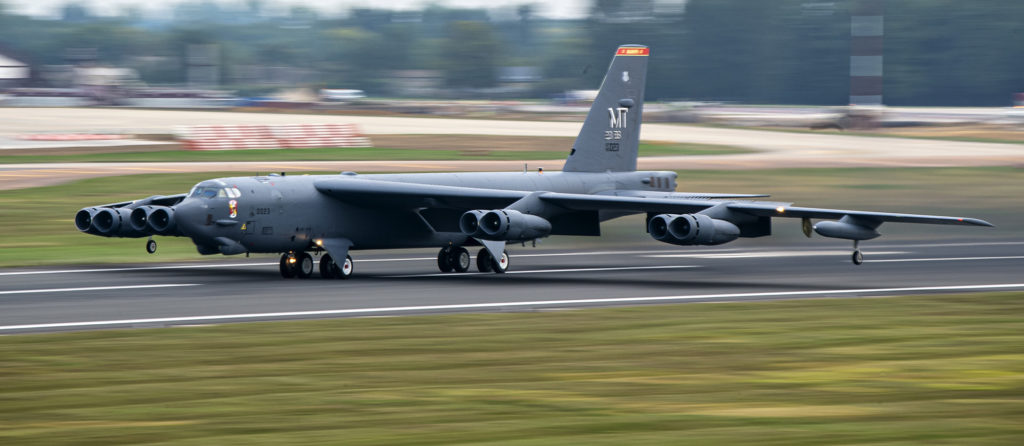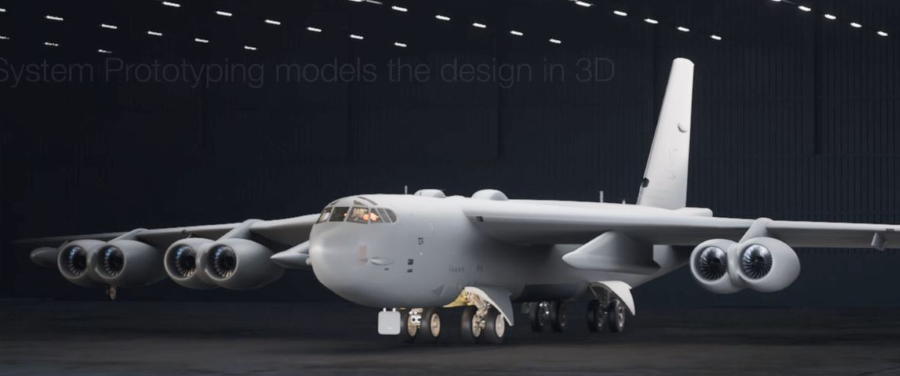A new image from Boeing shows how the B-52H will look after a series of modifications that the Air Force has said are significant enough to warrant re-designating the aircraft as the B-52J or K. The image was rendered from a digital prototyping model and is likely to closely resemble the final version.
Prominent in the image are the larger-diameter fans of the new F130 engines to be built by Rolls-Royce North America. Also noteworthy are how the engine nacelles, each containing two engines, are set higher and farther forward than the nacelles for the Pratt & Whitney TF-33 engines with which the B-52 has been flying since 1962. The new engines are set higher in part to provide more ground clearance. The need to validate how the new engines/nacelles will behave in relation to the wing and flap system is a major part of the flight testing program set to start in the next two years.

The nose of the aircraft will also be streamlined, losing the blisters that currently house the forward-looking infrared/electro-optical viewing system to facilitate the new radar, a variant of the AN/APG-79 used on the Boeing F/A-18EF SuperHornet. The FLIR/EO system was used for terrain avoidance and battle assessment, but some of those functions will migrate to the radar or already have shifted to either a Litening or Sniper targeting pod, which the B-52 can carry on a wing pylon.
In addition to the engines and radar, the B-52 is getting an updated cockpit, a “hybrid” analog-digital engine control system, communications and navigation enhancements, and the deletion of one crew member station.
Also prominent in the images are two large humps on top of the fuselage, near the wing roots. A Boeing spokesperson said the humps are “not new and not part of our program,” but they seem larger than any fairings or blisters now in that area, which house GPS and other comm/nav equipment. Pressed, the Boeing spokesperson said, “I have nothing for you on that,” a phrase that sometimes indicates a classified issue. The humps’ location and size might suggest a larger, anti-jam GPS antenna.
New engines were the major reason the B-52G became the B-52H in 1962, Col. Louise Ruscetta, senior materiel leader for the B-52, said in August. But given that the combined engine/radar program represents “the largest modification in the history” of the B-52, a new designation is likely, Ruscetta said. There may be an interim designation because the radar will be installed before the engines and will drive a change in operating and maintenance manuals and documentation. The documents will change again once the engines have been replaced. The Air Force and Air Force Global Strike Command are looking at “how do we define” the new variant or variants, Ruscetta said.
The new radar is an active electronically scanned array type as used by fighters. It will take up far less room than the old mechanically scanned system, so the change will create growth space for electronic warfare functions, Ruscetta said. At least some of the B-52 fleet will be operational with both new radars and new engines by the end of the decade.
